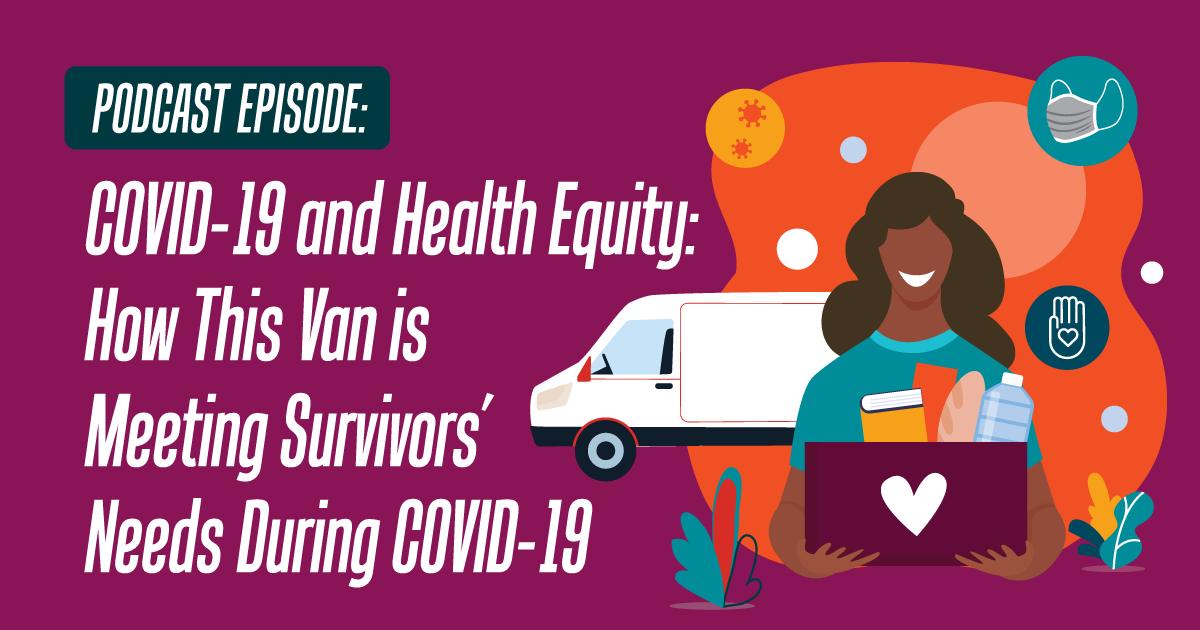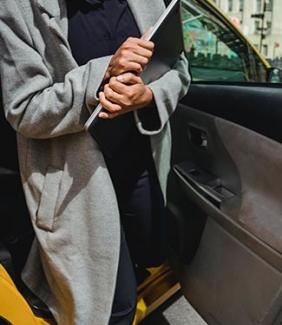By Marci Taitt-Lamar & Casey Keene, NRCDV
“Let’s pay homage to folks in community who have been lifting up community work for a very long time: folks doing restorative and transformative justice work; folks in Indigenous communities; folks like Mariame Kaba, Mimi Kim, and Beth Richie; the candy lady in the neighborhood; the dads and the aunts and the uncles who were the defacto coaches for the kids in the neighborhood; the nosey neighbor; the church mother. All of those folks have kept us safe for a really long time, and their efforts should not be overlooked.” – Karimah Dillard at the National Prevention Town Hall (October 2021)
Long before formal and funded domestic violence services came into being, and especially in communities of color, people have advocated for and supported those need in their communities. Not by requiring those individuals and families to come to them, but by being present where they live, work, play, and worship.
When the twin pandemics of Covid-19 and persistent racial injustice turned life as we knew it upside down, survivors at the margins had to bear the brunt and tension of a domestic violence field slow to adapt in the wake of quarantine and stay-at-home measures. It revealed stark gaps in our mainstream social service systems, especially as they failed to meet the needs of Black, Indigenous, and People of Color (BIPOC) and survivors with disabilities. However, culturally specific organizations have, for many years, turned to a trauma-informed, survivor-led form of advocacy that asks advocates to work in partnership with survivors to define for themselves how and where advocacy should occur. This approach is called mobile advocacy.
“Communities of color have created our own ways to provide the support that survivors need. Mobile advocacy is sometimes the only way that allows for our cultural practices to be used as a path for healing.” – Ivonne Ortiz
Responsive to the moment, mobile advocacy returns to the roots of DV advocacy, and embraces historically Black-led models of community care, through its flexible approach of meeting survivors where they are.
What is Mobile Advocacy?
“Mobile advocacy involves working with survivors in their communities and homes, rather than expecting survivors to meet with advocates at the DV agency. It involves accompanying survivors as they look for housing, go to court, and attempt to secure childcare or healthcare. Mobile advocacy includes actively working alongside survivors to obtain resources and social support and to maximize their safety.” (Chris M Sullivan, June 2017)
This approach to advocacy puts survivors at the forefront of the process. Where violence erodes a survivor’s ability to make choices, mobile advocacy creates the conditions for survivors to have agency, control, and self-determination.
“Mobile advocacy is an effective and evidence-based approach that allows people receiving services to choose the meeting place that’s safe and convenient for them. It's been used for many years by culturally specific organizations and by health service providers, and is increasingly employed by domestic and sexual violence advocates to lower barriers to services.” (Maria Williams & Toby Shulruff, 2020)
In addition to being a survivor-driven process, mobile advocacy also promotes a disability justice framework by letting the survivor identify the space that is most accessible to them. Survivors then determine the parameters for safety, access, and convenience.
During the pandemic, for example, accessibility has been particularly important as many traditional advocacy locations may not have been accessible to every survivor seeking advocacy support during social distancing and quarantine restrictions. Putting the container for advocacy in the survivor’s hand eliminates that barrier to access.
How can my organization integrate Mobile Advocacy into our services?
“Our goal is to provide culturally sensitive, appropriate, and far reaching services, we can’t do that without going into the community and meeting with people where they are most comfortable.” - Founder & CEO of Voices of Color, Tanesha Ash-Shakoor (January 2023)
There are several examples available which showcase the exciting, innovative ways domestic violence organizations have integrated mobile advocacy into their programming. Beyond the pandemic of COVID-19, mobile advocacy is a flexible way to support survivors where they are.
Innovative models:
- Sistas Van: A Mobile Healing Unit: “Sistas Van is a trauma-informed, survivor-centered Mobile Healing Unit created and managed by Black Women’s Blueprint. This wheelchair-accessible van is an all-gender affirming space that centers the experiences and needs of Black women and femmes to close the gap and fill the need for support services across the spectrum of sexual and reproductive health.”
- Eve’s Place Mobile Advocacy Program: “Eve’s Place provides mobile advocacy services throughout Arizona and parts of California and New Mexico within urban, rural and tribal settings. Eve’s Place has developed partnerships in many communities to provide safe and convenient meeting locations for individual appointments and support groups. Due to our mobility, meeting locations are rarely a concern. Adult Advocates meet with victims/survivors in safe and convenient locations to meet their individualized needs. Services include, but are not limited to: safety planning, support groups, resources and referrals, transportation to victim related services, relocation assistance if applicable, assistance in locating and transporting to emergency shelter, childcare upon availability during Eve’s Place services.” In the webinar, Mobile Advocacy Programs: How to Get Started and Keep Going!, Eve’s Place staff share information regarding the startup and maintenance of a mobile advocacy program from an administrative standpoint. Topics include conversations with board members, insurance questions, staff safety, confidentiality and lessons learned.
- Bridge Over Troubled Waters: Medical Van: Bridge provides innovative services to runaway, homeless and high-risk youth. “Our Mobile Medical Van, the first program of its kind in the nation, connects with the street outreach team each weeknight. The van is a national model for providing critical care: medical attention, survival kits, clothes, food, and referrals to in-depth, low barrier, open intake services at Bridge, and other agencies.”
- Domestic Violence Housing First (DVHF) Approach: Mobile advocacy is a particularly innovative and challenging aspect of the DVHF approach. Advocates work out in the community, meeting survivors wherever it is safe and convenient for the survivor. Check out “Survivor-Driven, Trauma-Informed, Mobile Advocacy” by the Washington State Coalition Against Domestic Violence (WSCADV). Their infographic describes mobile advocacy and includes quotes from advocates and directors at domestic violence programs who have implemented mobile advocacy in their community.
Mobile advocacy during COVID-19 pandemic:
 COVID-19 and Health Equity: How this Van is Meeting Survivors’ Needs During COVID-19: “When Black Women’s Blueprint purchased their Sistas Van in 2019, their original plan was to use it as a mobile healing unit that would help survivors of sexual violence access support, healing, and reproductive care. But when the COVID-19 pandemic began, Black Women’s Blueprint saw that there was an increased need for essential supplies like food, clothes, and hygiene products, so the Sistas Van shifted their services to meet the immediate needs of their community. In the second episode of our COVID-19 and Health Equity series, NSVRC’s Louie Marven talks with Sadé Swift, Sista’s Van Coordinator, about how Sistas Van adapted in the wake of COVID-19 in order to meet their community’s needs.” (Transcript (TXT) / Audio File (MP3))
COVID-19 and Health Equity: How this Van is Meeting Survivors’ Needs During COVID-19: “When Black Women’s Blueprint purchased their Sistas Van in 2019, their original plan was to use it as a mobile healing unit that would help survivors of sexual violence access support, healing, and reproductive care. But when the COVID-19 pandemic began, Black Women’s Blueprint saw that there was an increased need for essential supplies like food, clothes, and hygiene products, so the Sistas Van shifted their services to meet the immediate needs of their community. In the second episode of our COVID-19 and Health Equity series, NSVRC’s Louie Marven talks with Sadé Swift, Sista’s Van Coordinator, about how Sistas Van adapted in the wake of COVID-19 in order to meet their community’s needs.” (Transcript (TXT) / Audio File (MP3))- Consortium TA Team COVID-19 Special Topic Series: Mobile/Virtual Advocacy: From Shelter Model to Mobile Advocacy: “During the COVID-19 pandemic, making and maintaining contact with survivors is challenged in the context of the virus and the containment strategies most communities have in place. This Special Topic session spotlights programs in rural Pennsylvania that have successfully pivoted from site-based and mobile advocacy to virtual advocacy. NNEDV's Safety Net Project is also on hand to discuss how to protect survivor safety and privacy when using technology to provide advocacy and support.” (Webinar Recording / Slides: DVHTAC COVID-19 Special Topic Series: Mobile Advocacy)
And remember, adaptable practice is key. Not every model is one size fits all, and it is important to center the wants and needs of your community first. The way one program sets up their mobile advocacy services may not be the way your program should set up its mobile advocacy services. If you find yourself stuck, but want to learn more, reach out to NRCDV for training or technical assistance support.
For more information:
- Developing Mobile Advocacy Services in Your Community: This webinar by the
Arizona Coalition to End Sexual and Domestic Violence discusses strategies for expanding existing services to incorporate mobile services. When advocates literally meet survivors where they are, this can eliminate transportation barriers and take the burden off the survivor to get to the advocate. This service delivery model offers flexible access to services for those not in need of housing or shelter resources, including finding long-term unemployment or mental health solutions. This webinar addresses best practices, lessons learned from the field, advocate safety, survivor confidentiality, and methods and best practices for creating mobile advocacy policies. (Recording) - Mobile Advocacy With Survivors Of Domestic And Sexual Violence: This webinar explores the philosophical foundations of mobile advocacy and how it has been used in culturally specific contexts. Organizational considerations are also discussed. (Slides / Recording)
- New Strategies: Home Visiting and Mobile Advocacy: This presentation explores the use of mobile advocacy, including home visits, as part of a housing first program. This approach is trauma-informed and lowers barriers to services. (Slides)
- Advocates on the Move! Mobile Advocacy, Housing Stability, and Trauma: This presentation provides information about trauma and its impacts and suggests tips for working with survivors toward housing stability using a trauma-informed approach. (Slides)
- Survivor-Centered Mobile Advocacy for Survivors of Domestic and Sexual Violence: This webinar discusses the components of a survivor-centered mobile advocacy model. (Recording)














